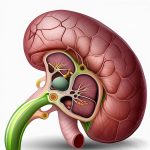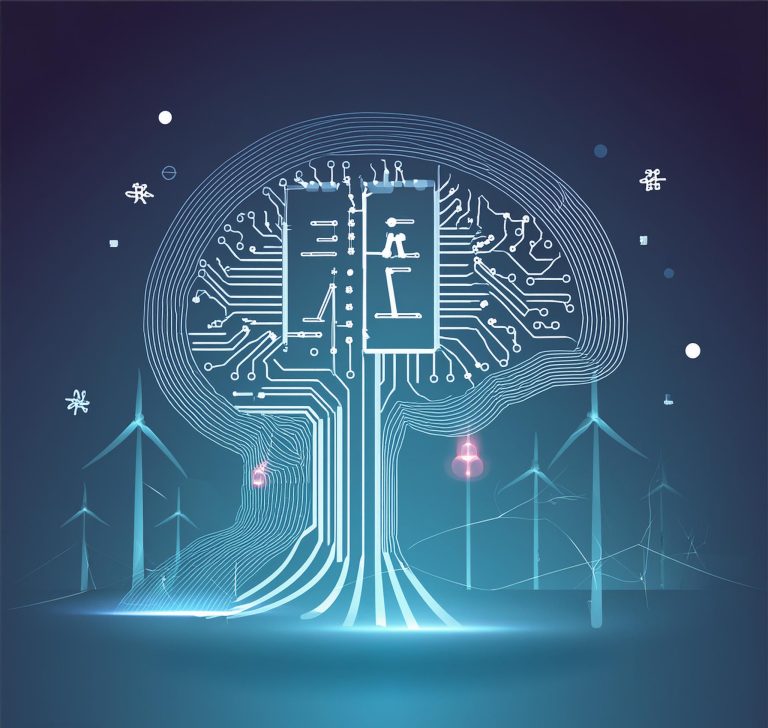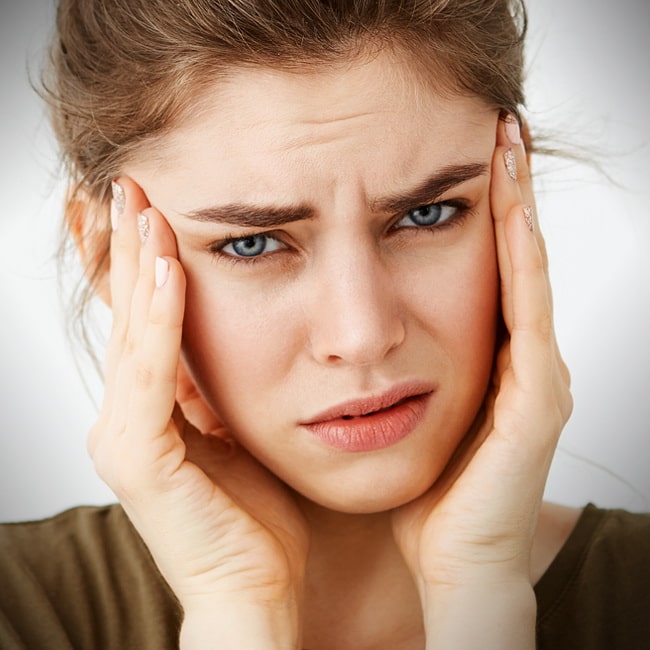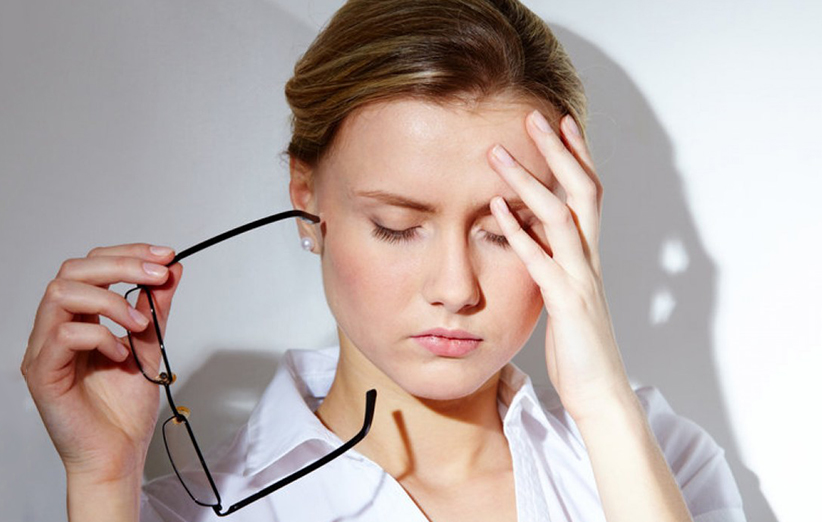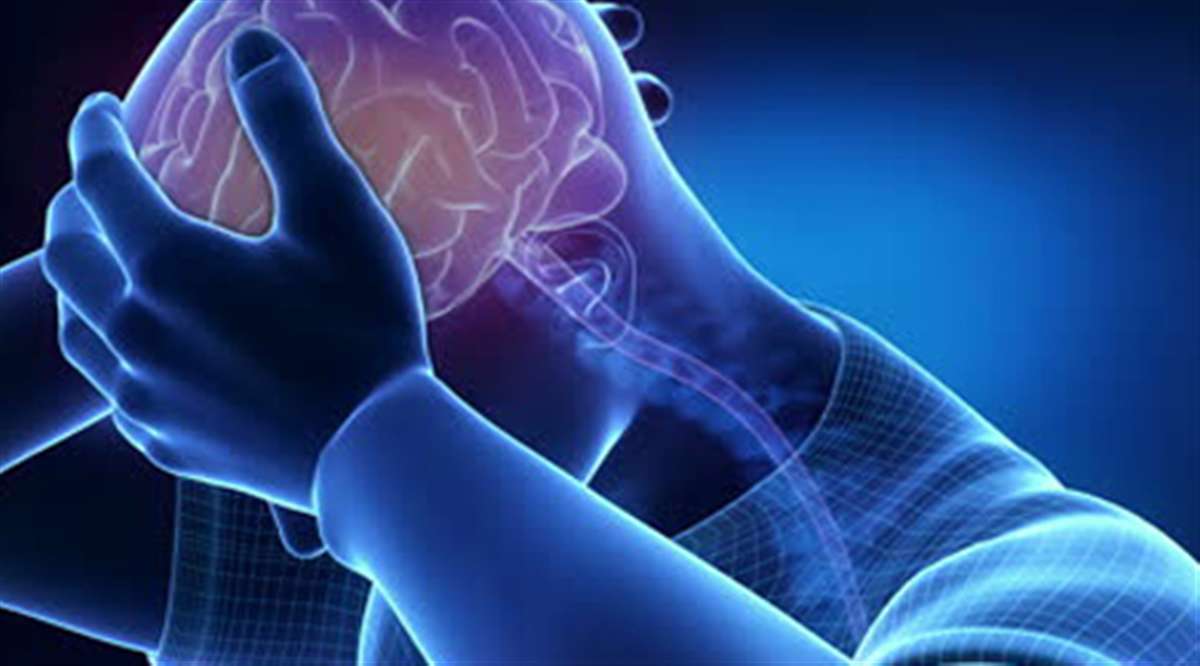tension headache
What is a Tension Headache?
A tension headache is one of the most common types of headaches. These headaches do not cause sensitivity to light, nausea, or vomiting. The pain of tension headaches is steady and can occur on both sides of the head. Tension headaches can be chronic or occur frequently or intermittently.
These headaches can be unbearable and exhausting. In this short article, we briefly examine the causes of tension headaches. We provide you with home remedies and quick pain relief solutions. Additionally, we inform you about the appropriate time to consult a doctor. Stay with us for a few minutes to permanently get rid of tension headaches.
Follow more topics and articles on this page
Which type of headache is a tension headache?
- A tension headache feels like a tight band wrapped around the head. The symptoms of tension headaches are similar among individuals. Physical signs include:
- Headache starts gradually.
- Pain is felt on both sides of the head.
- Tension headaches come with heavy and long-lasting pain.
- Pain affects the back of the neck and head.
- This pain is usually mild to moderate and not severe.
Some of these causes of tension headaches are as follows:
Stress Alcoholic beverages Fatigue Dry eyes Eye strain Tobacco use Cold or viral flu Migraine attacks Sinus infections Excessive caffeine consumption or caffeine dependence Mental stress Dehydration and insufficient fluid intake Lack of sleep Skipping meals Poor physical condition
Home remedies for tension headaches
Consulting a specialist in neurology is essential when faced with this condition. However, some habits can help us. These daily habits do not stop all tension headaches, but they have a significant impact on reducing the frequency of headaches:
Sleeping and waking up throughout a 24-hour period Exercise for tension headaches; at least 30 minutes daily Eat three main meals; no meal, especially breakfast, should be skipped. Eliminating factors that cause tension headaches; such as heavy and greasy foods or lack of sleep Rest and sleep in a calm and dark environment Stress management (yoga, massage, or meditation exercises) Using a cold or warm compress for 5 to 10 minutes on the head daily Taking a warm shower to reduce muscle tension and relax your body Stay away from the screen to prevent eye damage Improving your body posture when sitting or bending
Follow more topics and articles on this page
Immediate relief for tension headache
use of pain relievers To immediately stop tension headaches, over-the-counter pain relievers such as acetaminophen, ibuprofen, and aspirin are used. These drugs are non-prescription and can be obtained from a pharmacy without a prescription.
Excessive use of pain relievers ultimately harms the individual. Overuse of headache medications leads to dependency. Thus, in case of experiencing recurrent tension headaches, pain relievers may not work or even reverse the effect. Therefore, it returns to using tension headache tablets. If you wish to visit in person, you can book an appointment with the best neurologist in your area.
Sometimes tension headaches reach a level where they are not relieved by pain relievers; in such cases, the specialist physician prescribes other medications based on accurate diagnosis.
The following medications are among those prescribed for treatment:
- Tricyclic antidepressants
- Beta-blockers
- Sodium valproate
- Indomethacin
- Ketorolac, a type of pain reliever
- Naproxen
If pain relievers do not help, a different type of headache pill may be used. In this case, the doctor prescribes muscle relaxants. These relaxants prevent muscle contractions around the forehead, back of the neck, and head.
sinus headache
What is Sinusitis or Sinus Infection?
Sinusitis, which can occur in individuals throughout their lifetime, is related to the cavities present in the nasal airway. Although the cause of this condition varies for all individuals, based on the history of various patients, it can be said that most of them develop this condition after exposure to allergies or chemicals. This condition occurs when fungi, bacteria, or a virus grow and spread in the nasal interior adjacent to the sinuses.
Sinus Headache and Its Symptoms
Behind the bridge of your nose and the cheekbone, there are sinuses, where a very thin layer of mucus is produced. The function of this very thin layer is when air enters your lungs through the sinuses, and it can separate particles such as dust, bacteria, and pollutants. Sinusitis and the resulting headaches occur when the sinus space becomes inflamed, infected, or swollen for various reasons and produces more mucus. If your sinuses become inflamed, all of its channels will be blocked, and undoubtedly, the discharge of excess nasal mucus will be accompanied by headaches. Since sinus headaches are very bothersome, you can immediately become aware of the presence of this condition by recognizing symptoms such as pressure and heaviness in the cheeks, eyebrows, or forehead, nasal congestion, and pain in the upper jaw.
Causes of Sinusitis-induced Headaches
As you know, sinusitis and the headaches caused by it also have various types, such as acute and chronic, each of which has its own specific causes.
If a person catches a cold and does not have sufficient follow-up treatment, he or she may develop a sinus headache due to the irritation of the internal nasal and sinus tissues. Since the structure of sinuses is complex, undoubtedly, the entry of any infection into that area can cause sinus headaches and even, in more severe cases, problems such as dental infections. If the fluids produced by nasal mucus are not expelled in a timely manner, it can cause swelling, inflammation, and headaches in the head area. Also, by the presence of these contaminated fluids, different parts of the nasal cavity can also become infected. Congenital diseases such as cystic fibrosis, HIV virus, immune system disorders, chronic colds, hay fever, etc., can also contribute to the incidence of this condition. If there is a mass of nasal tissue in the nasal passage, it can provide a suitable bed for contamination to enter and cause the person to suffer from sinus headaches. Diagnosis of Sinus Headaches and Preventive Measures Since the symptoms of migraines and sinus headaches overlap, many people may mistakenly diagnose this condition; therefore, its diagnosis is not easily possible, and you should consult a skilled specialist. There are many diagnostic methods, and specialists can sometimes examine your condition by performing physical examinations, imaging tests such as X-rays, CT scans, nasal endoscopy, and checking the obstruction of your sinuses. Nowadays, there are various solutions for sinusitis and the accompanying headaches, which you can maintain your health by performing them.
- Sufficient rest and sleep
- Engaging in physical activity
- Reducing stress and anxiety
- Observing personal hygiene
- Annual flu vaccination
- Consumption of vegetables, fruits, and protein to strengthen the immune system
- Sinus and sleep
Treatment of Sinusitis and Its Headaches
Some diseases such as sinusitis and its accompanying headaches can also be improved by using some home remedies and treatment methods. However, it should be noted that first of all, you must visit a specialist physician and perform all these actions under his supervision.
One of the things that can prevent this condition is the use of steam or warm water shower. Doing this can calm all parts of the nasal cavity, including the sinuses, and in the case of inflammation, the treatment process may seem unique and simple. If a person has high blood pressure, certainly, taking a warm water shower can be harmful to him. You can rinse your nose with saline solution. This can be done with specialized devices or with household items at home. This can remove all infections and bacteria from the interior of your nose. If your sinusitis is in its early stages, the doctor may prescribe pain relievers such as ibuprofen and acetaminophen for you. Use of nasal decongestants for one week If your sinusitis and headaches are due to infection in the internal nasal area, the doctor will prescribe antibiotics to prevent nasal burning and bleeding for you. However, it should be noted that the use of these drugs should not exceed one week. If you experience this and do not improve after one week, you can visit your doctor again. If a person does not improve after a while, the doctor may recommend sinus surgery using endoscopy. It should be noted that the process of performing this operation is very simple, and the patient will be anesthetized before starting work.
Follow more topics and articles on this page
What is Cluster Headache?
Cluster headaches are characterized by severe attacks of pain around the head and eyes. Cluster headaches typically affect one side of the head and are particularly felt around the eyes. However, it should be noted that this type of headache is very rare.
Cluster headaches may occur in anyone at any age, but they are more common in men. Most people between the ages of 30 and 40 are at risk of cluster headaches. Therefore, it is better to be familiar with the symptoms and treatment methods.
What are the Symptoms of Cluster Headache?
These types of headaches happen very quickly. The pain is so severe and excruciating that the person feels like their head is being pierced, burned, or pricked with needles. When these headaches start, the symptoms are felt around the temples, eyes, and face. As mentioned, this neurological attack usually affects one side of the head.
When these headache attacks start, the person feels a lot of restlessness and agitation. This feeling is evident by shaking or pounding their head. Cluster headache attacks usually last between 15 minutes to 3 hours and may occur several times throughout the day. Other symptoms of cluster headaches include:
- Redness of the eyes
- Watery eyes
- Swelling or drooping of one eyelid
- Sweating on the face
- Constriction of one of the eye pupils
Quick Treatment Methods
1. 100% Oxygen Inhalation:
Inhaling oxygen through a mask at a rate of 7 to 10 liters per minute may provide significant relief within 15 minutes. While access to an oxygen cylinder and regulator may not always be possible, some portable devices are available. However, oxygen therapy may only delay symptoms in some cases without resolving them.
2. Injectable Sumatriptan:
Sumatriptan is a type of medication that can alleviate migraine pain. It acts as an agonist for 5-hydroxytryptamine (5-HT) receptors. This medication can relieve migraines and quickly alleviate cluster headaches. Zolmitriptan, a nasal spray, can be beneficial for some patients. The adult dose of sumatriptan is a 6-milligram injection. Two injections can be administered within a 24-hour period with a minimum one-hour interval.
People with uncontrolled high blood pressure or ischemic heart disease should not use this medication.
3. Dihydroergotamine (DHE):
This medication is an effective pain reliever for some individuals. It can be administered intravenously or via inhalation. The intravenous dose should be prescribed by a specialist. Inhalation is also effective but slower in onset.
4. Octreotide:
Octreotide is a synthetic injectable version of somatostatin (a type of brain hormone). Its use is an effective treatment for cluster headaches and is safe for individuals with high blood pressure or ischemic heart disease.
5. Local Nasal Anesthesia Drops:
Lidocaine is an effective treatment for cluster headaches.
headache behind eyes
What is Behind-the-Eye Pain?
Feeling pain behind the eye is a common symptom with numerous causes. Correctly diagnosing the cause of this pain is not always straightforward. Ophthalmologists or healthcare providers must assess eye health to identify the source of the pain.
Pain behind the eye can manifest as a vague ache, a sharp, intense pain, or even an explosive sensation for some individuals. Some describe eye pain as deep headaches.
Pain felt behind the eye may be accompanied by other symptoms, including:
- Red eyes
- Light sensitivity
- Numbness
- Weakness
- Double vision
- Fever
- Pain upon eye movement
- Sinus pressure
Medicinal Solutions for Treating Behind-the-Eye Pain
If opting for pharmaceutical treatments, physicians may prescribe medications to address behind-the-eye pain. Among the most effective drugs for treating this type of pain, the following are notable:
1. HTP-5 Medication for Behind-the-Eye Pain: This medication increases serotonin and endorphin levels. It’s recognized as a natural pain reliever that affects cerebral blood flow in blood vessels.
2. Coenzyme Q10 for Migraine Behind-the-Eye Pain: Commonly used for individuals experiencing migraines, this medication can significantly reduce behind-the-eye pain.
3. Analgesics for Alleviating Behind-the-Eye Pain: For temporary relief from these pains, it’s advisable to use milder analgesics such as ibuprofen and acetaminophen.
4. Eye Drops for Soothing Behind-the-Eye Pain: Among the most important eye drops for soothing behind-the-eye pain are nonsteroidal anti-inflammatory drugs (NSAIDs), corticosteroids, and local anesthetics.











